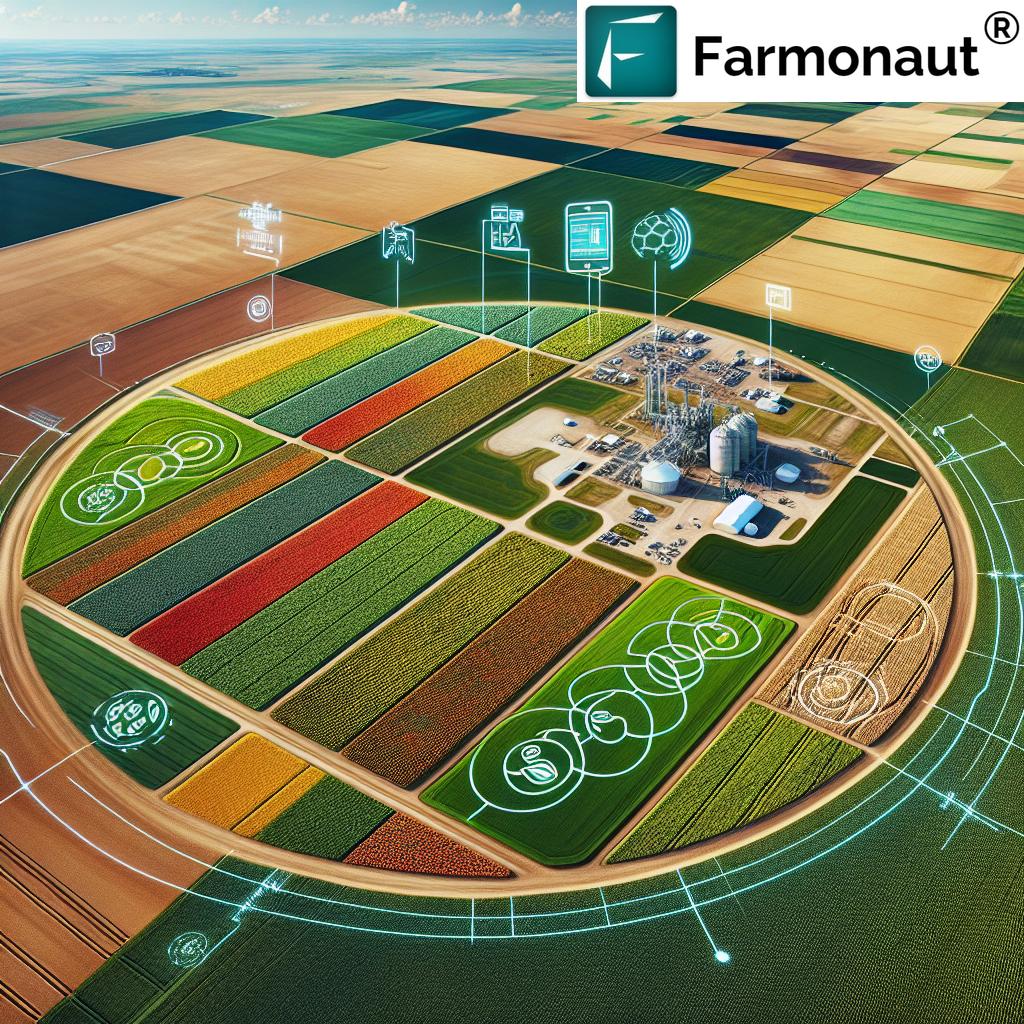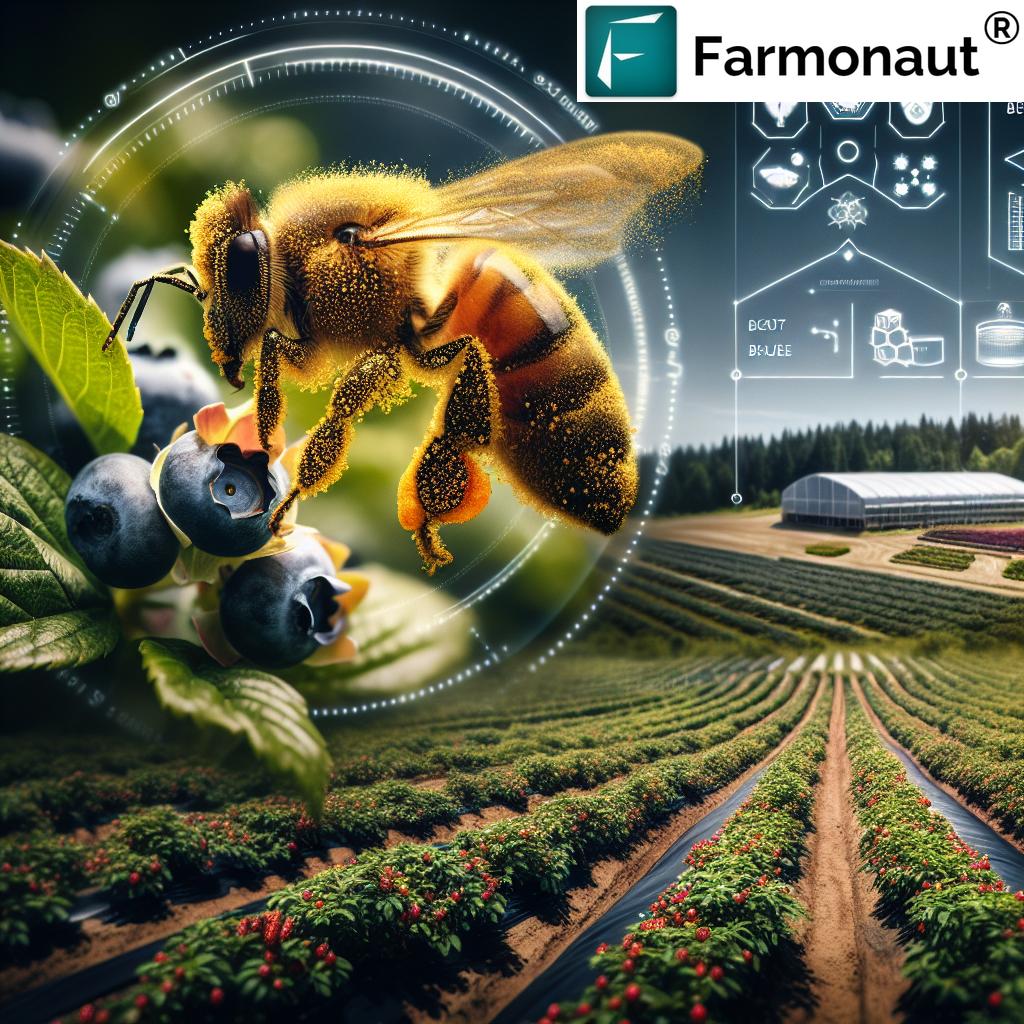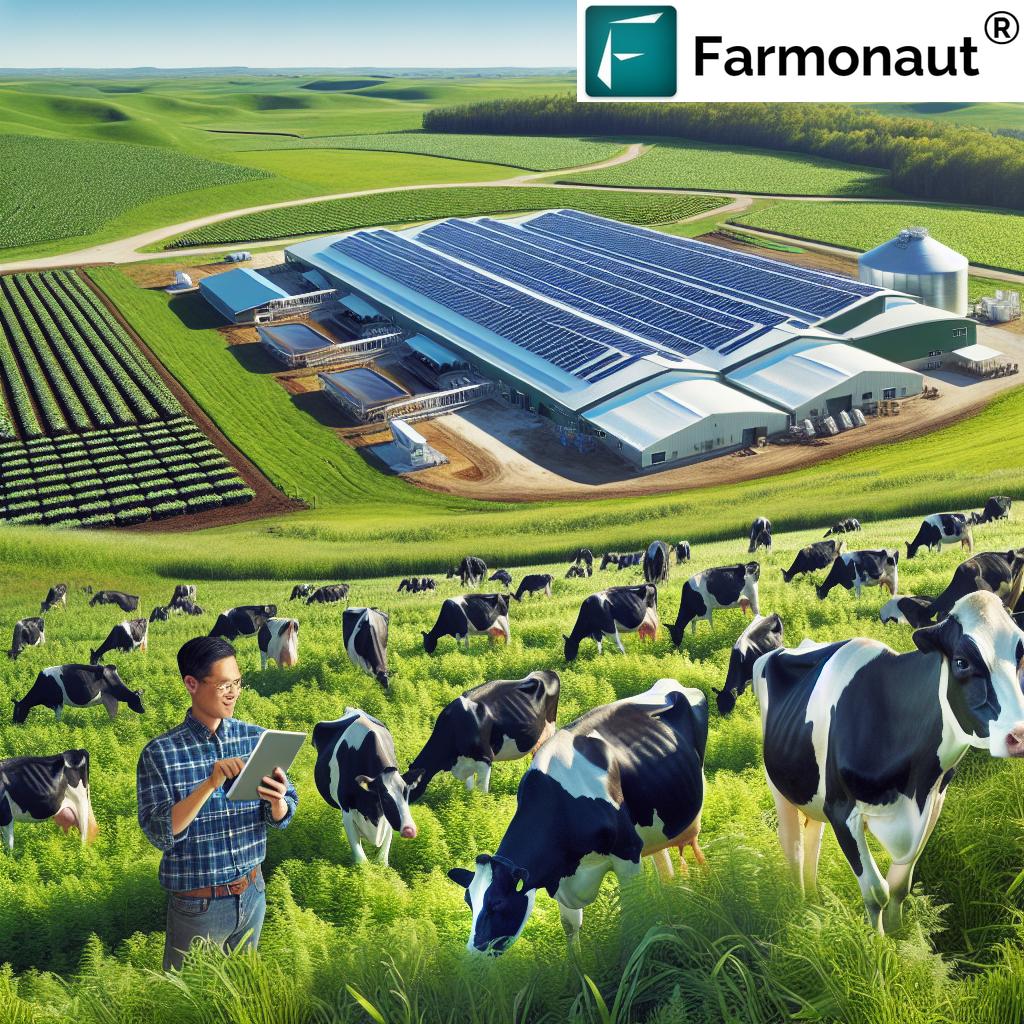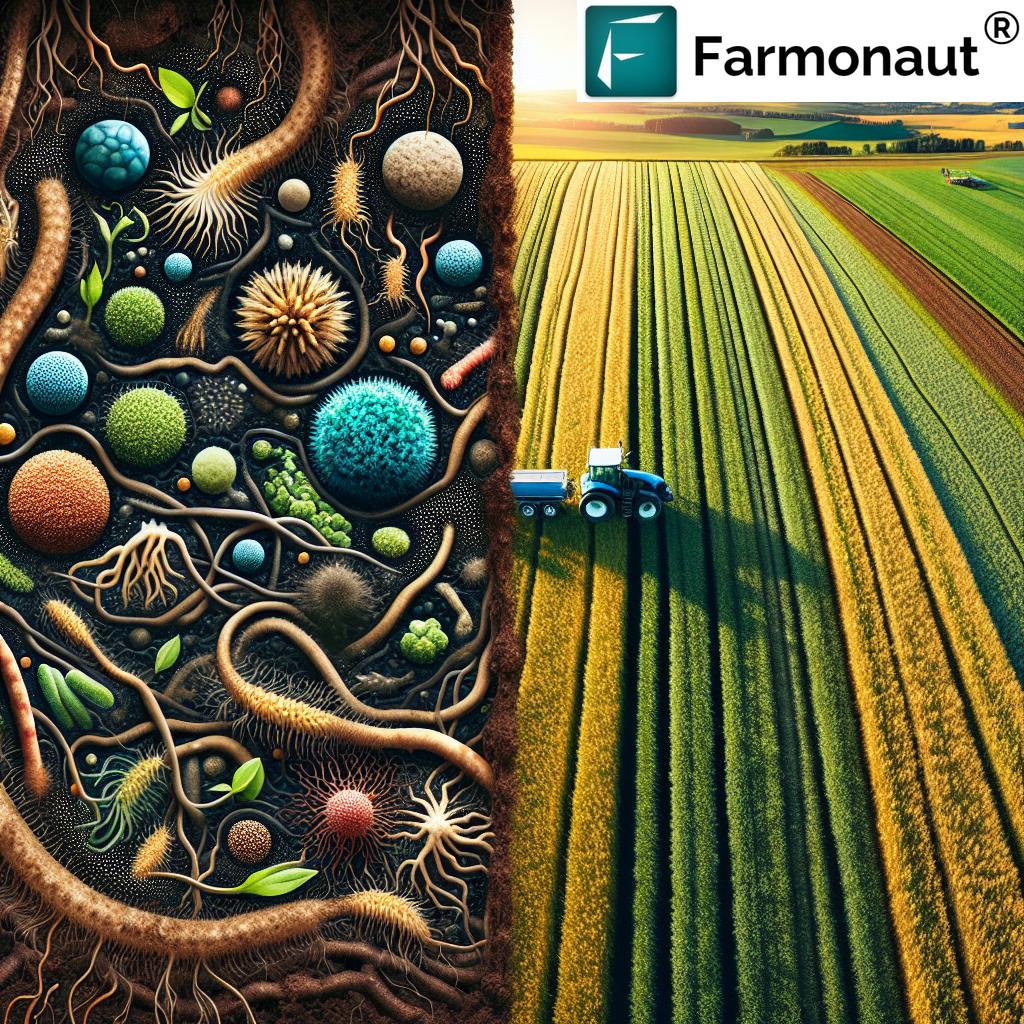Sustainable Dairy Farming in Canada: How Farmonaut Empowers Farmers to Achieve Net-Zero Emissions
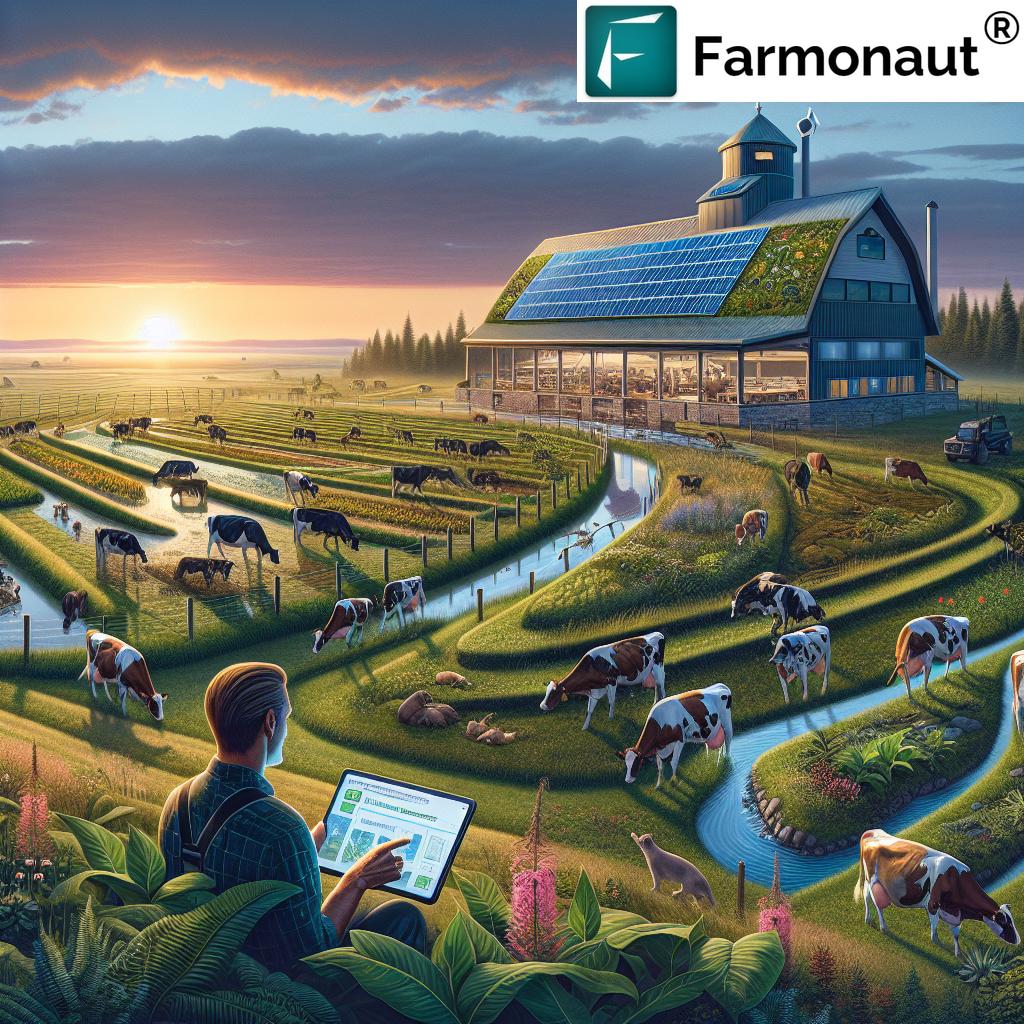
“Canadian dairy farmers aim to achieve net-zero emissions by 2050, showcasing a long-term commitment to sustainability.”
In the heart of Canada’s vast agricultural landscape, a revolution is underway. Sustainable dairy farming is transforming the industry, setting new standards for environmental stewardship and productivity. As we delve into this exciting world, we’ll explore how Canadian dairy farmers are pioneering innovative practices to achieve net-zero emissions by 2050, and how Farmonaut’s cutting-edge technology is playing a crucial role in this transformation.
The Path to Net-Zero: Canada’s Dairy Industry Takes the Lead
Canadian dairy farmers are at the forefront of sustainable agriculture, embracing a wide array of practices that not only reduce their environmental footprint but also enhance the quality of their products. From coast to coast, these dedicated professionals are implementing regenerative agriculture techniques, revolutionizing their approach to animal husbandry, and leveraging advanced technologies to optimize resource use.
Let’s explore some of the key initiatives driving this sustainable revolution:
- Regenerative Agriculture: Enhancing soil health and biodiversity
- Rotational Grazing: Maximizing pasture potential and carbon sequestration
- Water Conservation: Implementing innovative irrigation and recycling methods
- Renewable Energy: Harnessing solar, wind, and biogas power
- Precision Farming: Utilizing data-driven insights for optimal resource management
As we dive deeper into these practices, we’ll see how Farmonaut’s advanced satellite-based farm management solutions are empowering farmers to make data-driven decisions, leading to more sustainable and efficient operations.
Regenerative Agriculture: Nurturing the Foundation of Sustainable Dairy Farming
At the core of sustainable dairy farming in Canada lies the practice of regenerative agriculture. This holistic approach focuses on restoring and enhancing the natural ecosystems within which farms operate. By implementing these techniques, Canadian dairy farmers are not only reducing their carbon footprint but also improving the overall health of their land.
Key aspects of regenerative agriculture in dairy farming include:
- Cover Cropping: Planting diverse species to protect and enrich soil
- Minimal Tillage: Reducing soil disturbance to preserve soil structure and microorganisms
- Crop Rotation: Diversifying plant species to enhance soil nutrients and break pest cycles
- Composting: Recycling organic matter to create nutrient-rich soil amendments
Farmonaut’s satellite-based crop health monitoring plays a crucial role in supporting these practices. By providing real-time data on vegetation health (NDVI) and soil moisture levels, Farmonaut enables farmers to make informed decisions about crop management, optimizing the benefits of regenerative techniques.
Rotational Grazing: Maximizing Pasture Potential and Carbon Sequestration
“Rotational grazing in sustainable dairy farming can enhance soil health and biodiversity, supporting up to 50% more species.”
Rotational grazing is a cornerstone of sustainable dairy farming in Canada. This practice involves dividing pastures into smaller sections and systematically moving cattle between them. The benefits of this approach are multifaceted:
- Improved pasture quality and productivity
- Enhanced soil health through natural fertilization
- Increased carbon sequestration in soil and plant matter
- Better weed control and reduced need for herbicides
- Improved animal health and milk quality
Farmonaut’s Jeevn AI Advisory System provides invaluable support for implementing effective rotational grazing strategies. By analyzing satellite data and local weather patterns, the system offers personalized recommendations for optimal grazing schedules, ensuring that pastures are utilized efficiently while promoting regeneration.
Water Conservation: Preserving a Precious Resource
In the face of climate change and increasing water scarcity, Canadian dairy farmers are implementing innovative water conservation methods. These practices not only reduce the environmental impact of dairy production but also contribute to the long-term sustainability of farms.
Some key water conservation strategies include:
- Precision Irrigation: Using advanced sensors and weather data to optimize water application
- Water Recycling: Treating and reusing wastewater for non-potable purposes
- Rainwater Harvesting: Collecting and storing rainwater for various farm uses
- Drought-Resistant Forage: Planting varieties that require less water
Farmonaut’s satellite-based monitoring system plays a crucial role in water management by providing accurate soil moisture data. This information allows farmers to make precise decisions about irrigation timing and volume, preventing overwatering and reducing water waste.
Explore Farmonaut’s API for advanced data integration
Renewable Energy: Powering Sustainable Dairy Operations
Canadian dairy farmers are increasingly turning to renewable energy sources to power their operations, significantly reducing their reliance on fossil fuels and decreasing overall carbon emissions. Common renewable energy implementations include:
- Solar Panels: Harnessing sunlight for electricity generation
- Wind Turbines: Utilizing wind power in suitable locations
- Biogas Digesters: Converting manure and organic waste into energy
- Geothermal Systems: Using earth’s natural heat for heating and cooling
Farmonaut’s carbon footprinting feature supports these initiatives by providing real-time data on emissions, allowing farmers to track the impact of their renewable energy investments and identify areas for further improvement.
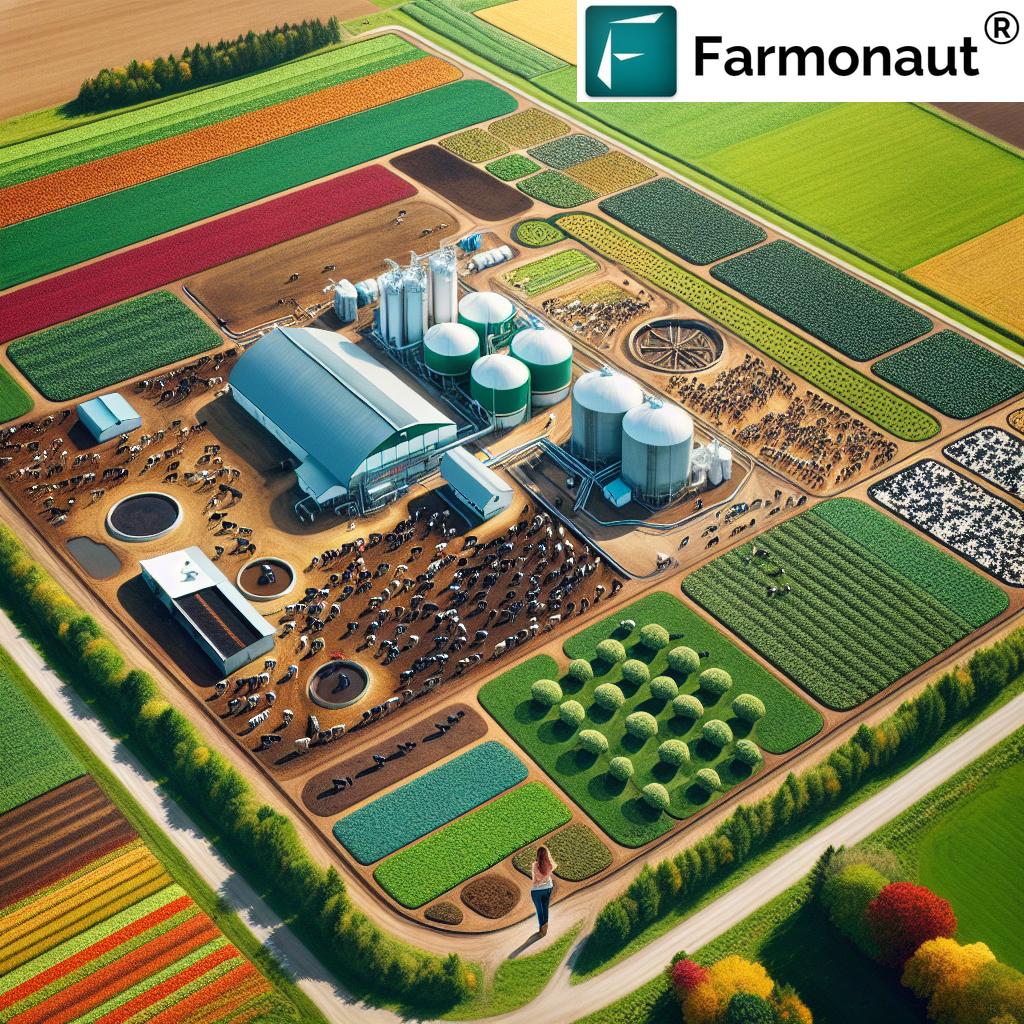
Precision Farming: Data-Driven Sustainability
Precision farming is revolutionizing the dairy industry in Canada, allowing farmers to optimize resource use and minimize environmental impact. By leveraging advanced technologies and data analytics, farmers can make informed decisions about every aspect of their operations.
Key aspects of precision farming in dairy include:
- Satellite Crop Monitoring: Tracking crop health and yield potential
- Soil Mapping: Analyzing soil composition for targeted nutrient management
- GPS-Guided Equipment: Optimizing field operations and reducing overlap
- Smart Feeding Systems: Tailoring feed rations to individual animal needs
- Automated Milking Systems: Improving efficiency and animal welfare
Farmonaut’s comprehensive platform is at the forefront of precision farming technology. By providing real-time satellite imagery, AI-driven insights, and powerful analytics tools, Farmonaut empowers farmers to implement precision farming techniques effectively, leading to improved sustainability and productivity.
Agricultural Plastic Recycling: Closing the Loop on Farm Waste
Canadian dairy farmers are taking significant steps to address the issue of agricultural plastic waste through innovative recycling programs. These initiatives not only reduce the environmental impact of dairy operations but also contribute to the circular economy.
Key aspects of agricultural plastic recycling in dairy farming include:
- Silage Wrap Recycling: Collecting and processing used silage wraps
- Twine and Net Wrap Recovery: Recycling baling materials
- Pesticide Container Collection: Proper disposal of chemical containers
- Milk Jug Recycling: Repurposing plastic milk containers
While Farmonaut doesn’t directly handle plastic recycling, its farm management tools help farmers optimize their operations, potentially reducing the overall use of plastic materials and supporting more sustainable practices.
Access Farmonaut’s API Developer Docs for integration insights
Dairy Nutrition Education: Fostering Sustainable Consumption
An integral part of sustainable dairy farming in Canada is educating consumers about the nutritional benefits of dairy products and the industry’s commitment to sustainability. This educational initiative serves multiple purposes:
- Promoting the health benefits of dairy in a balanced diet
- Highlighting the industry’s efforts in sustainable production
- Encouraging responsible consumption and reducing food waste
- Connecting consumers with local dairy farmers and their practices
While Farmonaut’s primary focus is on farm management, the data and insights it provides can be valuable in supporting these educational efforts, offering concrete examples of how technology is driving sustainability in dairy farming.
Sustainable Practices Across Canada: A Provincial Overview
Sustainable dairy farming practices are being implemented across Canada, with each province adapting strategies to suit their unique climate and geographical conditions. Let’s take a brief look at some provincial highlights:
- British Columbia (BC): Focus on water conservation and renewable energy
- Alberta (AB): Leading in precision agriculture and soil health management
- Saskatchewan (SK): Pioneering drought-resistant forage cultivation
- Manitoba (MB): Excelling in rotational grazing and pasture management
- Ontario (ON): Innovating in biogas production and nutrient management
- Quebec (QC): Advancing in agricultural plastic recycling and circular economy initiatives
- New Brunswick (NB): Focusing on coastal farm adaptation and soil erosion prevention
- Nova Scotia (NS): Leading in small-scale sustainable dairy practices
- Prince Edward Island (PE): Innovating in cover cropping and soil conservation
- Newfoundland and Labrador (NL): Adapting sustainable practices for harsh northern climates
Farmonaut’s technology is adaptable to these diverse conditions, providing tailored insights for farmers across all provinces. The platform’s ability to analyze local climate data and satellite imagery makes it an invaluable tool for implementing sustainable practices in any region of Canada.
The Role of Technology in Achieving Net-Zero Emissions
Technology plays a pivotal role in Canadian dairy farmers’ journey towards net-zero emissions. Advanced tools and systems are enabling more precise management of resources, reduction of waste, and optimization of farm operations. Here’s how technology is making a difference:
- Satellite Imaging: Monitoring crop health and soil conditions
- IoT Sensors: Tracking environmental parameters and animal health
- AI and Machine Learning: Providing predictive insights for farm management
- Blockchain: Ensuring transparency and traceability in the supply chain
- Automated Systems: Optimizing feeding, milking, and waste management
Farmonaut’s comprehensive platform integrates many of these technologies, offering Canadian dairy farmers a powerful tool for achieving their sustainability goals. From satellite-based crop monitoring to AI-driven advisory systems, Farmonaut empowers farmers with the data and insights needed to make informed decisions and optimize their operations for sustainability.
Sustainable Dairy Farming Practices in Canada: A Comparative Overview
| Sustainable Practice | Environmental Benefits | Implementation Rate (%) | Farmonaut’s Role |
|---|---|---|---|
| Rotational Grazing | Improved soil health, increased biodiversity, carbon sequestration | 65 | AI-driven grazing schedules, pasture health monitoring |
| Agricultural Plastic Recycling | Reduced landfill waste, lower carbon footprint | 40 | Resource management optimization, reducing overall plastic use |
| Water Conservation Methods | Reduced water usage, protection of water sources | 75 | Precision irrigation recommendations based on soil moisture data |
| Regenerative Agriculture Techniques | Enhanced soil fertility, increased carbon storage, improved biodiversity | 55 | Crop health monitoring, soil analysis, AI-driven recommendations |
| Renewable Energy Adoption | Reduced greenhouse gas emissions, energy independence | 30 | Carbon footprint tracking, energy efficiency recommendations |
The Future of Sustainable Dairy Farming in Canada
As we look to the future, the Canadian dairy industry is poised for continued innovation and progress in sustainable farming practices. Several key trends and developments are shaping this future:
- Increased Integration of AI and Machine Learning: Enhancing predictive capabilities for farm management
- Advancements in Biotechnology: Developing more resilient and eco-friendly feed crops
- Expansion of Carbon Markets: Creating new revenue streams for sustainable farming practices
- Enhanced Collaboration: Fostering partnerships between farmers, researchers, and technology providers
- Consumer-Driven Sustainability: Meeting growing demand for transparently produced, eco-friendly dairy products
Farmonaut is committed to evolving alongside these trends, continually enhancing its platform to meet the changing needs of Canadian dairy farmers. By staying at the forefront of agricultural technology, Farmonaut will continue to play a crucial role in helping farmers achieve their sustainability goals and move towards net-zero emissions.
Conclusion: A Sustainable Future for Canadian Dairy
The journey towards sustainable dairy farming in Canada is well underway, with farmers across the country embracing innovative practices and cutting-edge technologies to reduce their environmental impact while maintaining high standards of production and animal welfare. From regenerative agriculture techniques to precision farming powered by satellite technology, the industry is making significant strides towards its goal of net-zero emissions by 2050.
Farmonaut’s role in this transformation cannot be overstated. By providing farmers with advanced satellite-based farm management solutions, AI-driven insights, and powerful analytics tools, Farmonaut is empowering the Canadian dairy industry to make data-driven decisions that enhance sustainability, productivity, and profitability.
As we move forward, the continued collaboration between farmers, technology providers like Farmonaut, researchers, and policymakers will be crucial in overcoming challenges and seizing new opportunities in sustainable dairy farming. With dedication, innovation, and the right tools at their disposal, Canadian dairy farmers are well-positioned to lead the global agricultural community towards a more sustainable and resilient future.
FAQ: Sustainable Dairy Farming in Canada
Q: What is the main goal of sustainable dairy farming in Canada?
A: The primary goal is to achieve net-zero emissions by 2050 while maintaining high standards of production, animal welfare, and environmental stewardship.
Q: How does rotational grazing contribute to sustainable dairy farming?
A: Rotational grazing improves pasture quality, enhances soil health, increases carbon sequestration, and promotes biodiversity.
Q: What role does technology play in sustainable dairy farming?
A: Technology, such as Farmonaut’s platform, provides farmers with data-driven insights for precision farming, resource management, and environmental monitoring.
Q: How are Canadian dairy farmers addressing water conservation?
A: Farmers are implementing precision irrigation, water recycling systems, rainwater harvesting, and planting drought-resistant forage crops.
Q: What is regenerative agriculture, and how does it apply to dairy farming?
A: Regenerative agriculture in dairy farming involves practices like cover cropping, minimal tillage, and crop rotation to improve soil health and biodiversity.
Q: How does Farmonaut support sustainable dairy farming practices?
A: Farmonaut provides satellite-based crop monitoring, AI-driven advisory systems, and resource management tools to help farmers optimize their operations for sustainability.





